Scottish Inpatient Experience Survey 2016 Volume 1: National Results
Report detailing the results from the Scottish Inpatient Experience Survey 2016.
This document is part of a collection
Results - Admission to Hospital
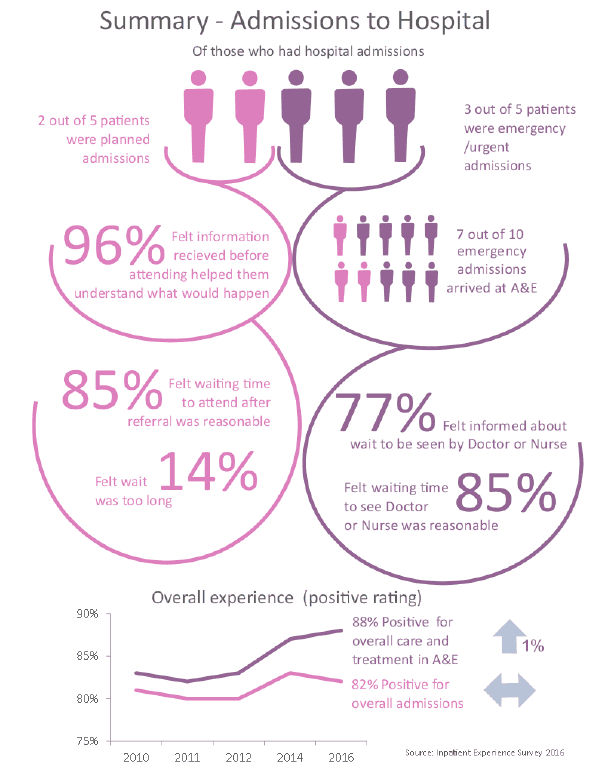
Summary
People mainly rated their admission to hospital positively, with over four out of five ( 82 per cent) rating their admission to hospital as 'excellent' or 'good'.
People also rated most aspects of care and treatment they received in the Accident and Emergency Department (A&E) positively. Around nine out of ten ( 88 per cent) rated the overall care and treatment they received in A&E as 'excellent' or 'good'.
People who used A&E were least positive about being kept informed about the length of time to wait to be seen by a doctor or nurse in A&E - around one in four ( 23 per cent) indicated that they weren't kept informed. Similarly around one in six ( 15 per cent) indicated that the time waiting to be seen by a doctor or nurse in A&E was too long.
In general, results for questions relating to hospital admission saw similar results or an increase in positive ratings from the previous survey in 2014. The only exception to this was in relation to the waiting time for admission to hospital after being referred, which saw a decrease in the percentage positive response.
Emergency or planned in advance
Those who attended hospital were either admitted as an emergency/urgent case or have the attendance planned in advance. The people who responded to the survey were admitted as follows:
- around three in five were admitted as an emergency/urgent admission ( 63 per cent)
- around two in five had their stay planned in advance ( 37 per cent)
Of the emergency/urgent patients, seven out of ten ( 71 per cent) went to A&E when they arrived at hospital.
A&E
People who went to A&E when they arrived at hospital were asked about various aspects of their care and treatment whilst in A&E, around nine out of ten ( 88 per cent) rated the overall care and treatment they received in A&E positively (Figures 2 and 3).
People felt most positive about the privacy they were given during their care and treatment in A&E, 98 per cent felt that they were given enough privacy when being examined or treated in A&E (Figure 4).
Figure 2 Breakdown of overall rating of care and treatment in A&E (%)
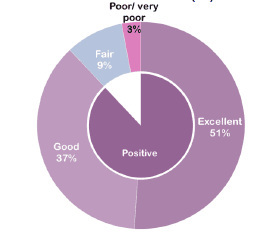
Figure 3 Overall positive rating of care and treatment in A&E (%)
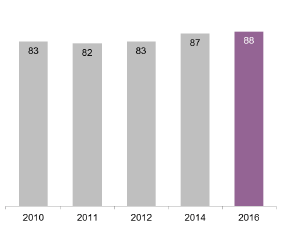
People were least positive about the following aspects of their A&E care (Figure 4):
- being kept informed about the wait to be seen by a nurse or doctor in A&E - around one in four ( 23 per cent) indicated they weren't kept informed, 33 per cent indicated they were informed 'to some extent' and the remaining 44 per cent felt 'completely' informed
- around three in five ( 61 per cent) felt that they were kept informed about what was happening once they had been seen by a nurse or doctor
- around two in three ( 68 per cent) felt that their condition was 'completely' discussed with them in a way they could understand
Some variation has been seen across the NHS Boards around being kept completely informed about the wait to be seen by a nurse or doctor. Results ranged from 36 to 75 per cent.
Views on the actual waiting time to be seen in A&E were generally positive, over five in six people ( 85 per cent) indicated that either they didn't have to wait or that the wait was reasonable), a rise of two percentage points from 2014. The remaining one in six ( 15 per cent) felt that the wait was too long.
Figure 4 Summary of emergency/urgent patient responses (%)
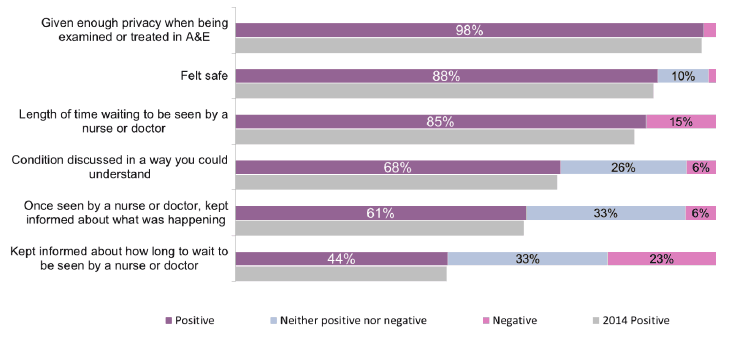
Planned in advance
People whose attendance at hospital was planned in advance were asked about the information they received before attending: 96 per cent of waiting list or planned patients indicated that the information helped them understand what would happen (Figure 5).
Waiting to be admitted after being referred
"On 01 October 2012, the Treatment Time Guarantee came into effect. This replaced the nine week standard that was in place from 31 March 2011 to 31 March 2012. […] Previously, the national waiting time standard stated that, from 31 March 2011, no patient waiting for treatment as an inpatient or day case would wait longer than nine weeks." [ 3] Information published by ISD Scotland shows that only five per cent of people who attended hospital (as Inpatient or Day Case) during the period covered by the survey (April to September 2015) had to wait longer than 12 weeks [ 4].
In the inpatient survey, around five in six people ( 85 per cent) thought that the wait to be admitted to hospital after they were referred was reasonable, a decrease of three percentage points from 2014.
Of the 15 per cent who felt the wait was unreasonable, 91 per cent felt that the wait was too long and nine per cent felt the wait was too short .
Figure 5 Summary of waiting list, planned attendance and waiting after arrival (%)

Waiting to get onto the ward
All patients were asked about the length of time taken to get to a bed on the ward after arrival at hospital:
- 86 per cent indicated they felt the wait was reasonable (Figure 5)
Overall rating of admission to hospital
All patients were asked to rate their overall admission to hospital:
- over four out of five ( 82 per cent) rated their admission to hospital positively (Figures 6 and 7)
Figure 6 Breakdown of overall rating of admission to hospital responses (%)
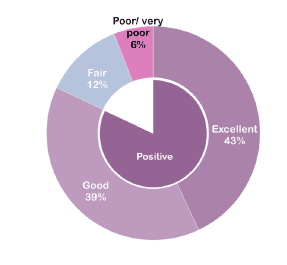
Figure 7 Overall positive rating of admission to hospital responses (%)
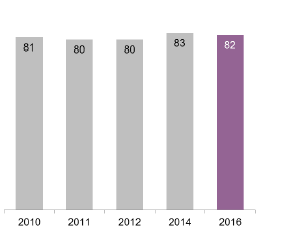
Contact
Email: Nicola Kerr, nicola.kerr2@gov.scot
There is a problem
Thanks for your feedback